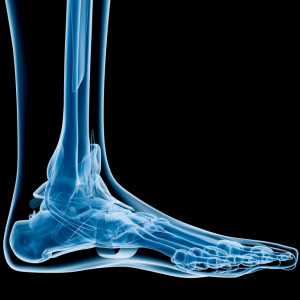FOOT & ANKLE PAIN: CAUSES AND TREATMENTS

Reviewed by AOSMI’s Trained Foot and Ankle surgeons, Dr. Allison DeWaters and Dr. Wesley Nesbit
With 26 small joints to consider, versus a single joint as in the hip and knee, the foot and ankle is a fascinating group of structures. This can create a multitude of issues and concerns that presents a complicated medical picture. When these foot and ankle structures are functioning in a normal and healthy manner we are often unaware of their existence; however, when a problem does arise, these structures can be quite painful and often debilitating. The podiatry care specialists at Advanced Orthopedics and Sports Medicine Institute are specifically trained in managing painful foot and ankle conditions.
COMMON FOOT & ANKLE CONDITIONS TREATED AT AOSMI
An orthopedic foot and ankle doctor tends to see the following conditions in people who are physically active but pregnant women, diabetics, and others suffering disease can also experience:
- Athletic injuries including stress fractures and ankle instability
- Sprains of the foot and ankle, tendon problems, sprains and strains, and shin splints
- Anterior impingement (footballer’s ankle)
- Posterior impingement
- Cartilage damage and arthritis
- Achilles tendonitis and ruptures
- Difficult lower extremity fractures
- Joint replacements in the foot and ankle
- Congenital or acquired foot deformities including, flat foot, high arches, bunions, and hammer toes
- Limb salvage, prevention of amputation, wound healing, diabetic foot problems, and infection management
NON-OPERATIVE FOOT & ANKLE PAIN TREATMENTS
Many foot and ankle conditions can be treated without invasive surgical procedures. Non-operative foot and ankle treatments offered by the doctors at AOSMI include:
 Bracing
Bracing
- Bracing: Bracing involves the use of specialized devices to provide support, stability, and alignment to the foot or ankle. These braces can help alleviate pain, promote healing, and prevent further damage by controlling motion and redistributing pressure
- Wound Healing
- Wound Healing: Our expert medical team employs advanced wound care techniques to facilitate healing and prevent infection in cases of foot and ankle wounds or ulcers.
- Medication Management
- Medication Management: Our doctors may prescribe oral anti-inflammatory drugs and pain relievers to manage pain, inflammation, and discomfort associated with various foot and ankle conditions.
- Physical Therapy: Strengthening and flexibility exercises in our state-of-the-art physical therapy center, holistic treatments, and therapeutic ultrasoundPhysical Therapy: Our state-of-the-art Physical Therapy center offers tailored exercise programs to improve strength, flexibility, and balance. These exercises aid in enhancing foot and ankle function and reducing pain.
- Injection Treatments including orthobiologics, Steroids, and Joint Fluid Replacement
- Injection Treatments: Injection therapies, including orthobiologics (e.g., platelet-rich plasma), Steroids, and Joint Fluid Replacement, provide targeted relief by reducing inflammation, promoting tissue healing, and improving joint lubrication.
- Damage Tissue Regeneration – EPAT
- Damage Tissue Regeneration – EPAT: EPAT (Extracorporeal Pulse Activation Technology) is a non-invasive treatment that uses pressure waves to stimulate tissue regeneration and promote healing. It can be effective in addressing certain foot and ankle conditions.
COMMON FOOT & ANKLE SURGICAL PROCEDURES
Once our foot and ankle doctors have exhausted all nonsurgical treatments options, surgical intervention may then be considered. Dr. Alison DeWaters and Dr. Wesley Nesbit, AOSMI’s foot and ankle surgeons, and their team will develop the appropriate surgical plan tailored to your foot and ankle pain condition. Dr. DeWaters has extensive training and experience in complete foot and ankle care; including complex reconstructive surgery, diabetic reconstruction, total ankle replacement, arthroscopic procedures, and management of lower extremity trauma. Dr. Nesbit is experienced in performing various foot and ankle procedures, including forefoot and rearfoot surgeries, ankle trauma, and minimally invasive techniques. Following surgery, we utilize the latest medications, bracing techniques, physical therapy, and orthotics to ensure an optimal recovery. Together with each orthopedic foot and ankle surgeon at AOSMI, Dr. DeWaters and Dr. Nesbit strive to help return all their patients back to full activity, while providing the best medical and surgical foot and ankle care. Contact us today to schedule a consultation with a highly specialized foot and ankle pain doctor at AOSMI.
Frequently Asked Questions About Foot and Ankle Pain Causes and Treatments
What does diabetic foot pain feel like?
Diabetic foot pain can manifest as a range of sensations, including tingling, burning, numbness, or sharp stabbing pains. It often results from nerve damage (neuropathy) due to diabetes and can lead to reduced sensation and increased vulnerability to injuries.
Can sciatica cause foot pain?
Yes, sciatica can cause foot pain. Sciatica refers to the irritation or compression of the sciatic nerve, which runs from the lower back down to the feet. When the sciatic nerve is affected, it can lead to pain, tingling, or numbness that radiates down the leg and into the foot.
What underlying conditions cause foot pain?
Foot pain can be caused by various underlying conditions, including:
– Plantar Fasciitis
– Bunions
– Morton’s Neuroma
– Arthritis (e.g., osteoarthritis, rheumatoid arthritis)
– Gout
– Tendonitis
– Stress fractures
– Diabetic neuropathy
– Nerve entrapment
– Flat feet (fallen arches)
– Hammertoes
Can ankle pain be treated at home?
Mild ankle pain caused by minor strains or overuse can often be managed at home through the R.I.C.E. method: Rest, Ice, Compression, and Elevation. However, if the pain is severe, persistent, or accompanied by swelling, deformity, or difficulty bearing weight, it’s important to seek medical evaluation.
What causes ankle pain without injury?
Ankle pain without a clear history of injury may be caused by various factors, including:
– Arthritis
– Tendinitis
– Gout
– Nerve compression (e.g., tarsal tunnel syndrome)
– Overuse or strain
– Degenerative changes
– Inflammatory conditions
What type of doctor should I see for ankle pain?
For ankle pain, you may initially consult a primary care physician. However, if the pain is persistent, severe, or related to a specific condition, you may be referred to a specialist such as an orthopedic surgeon, podiatrist, or sports medicine physician. These specialists have expertise in diagnosing and treating ankle-related issues.

Find your Provider












